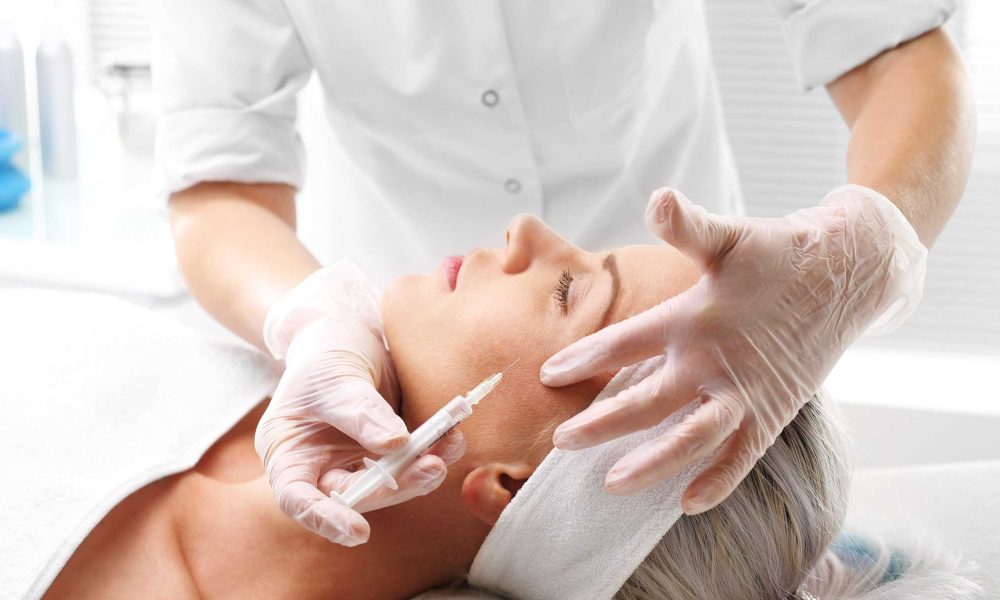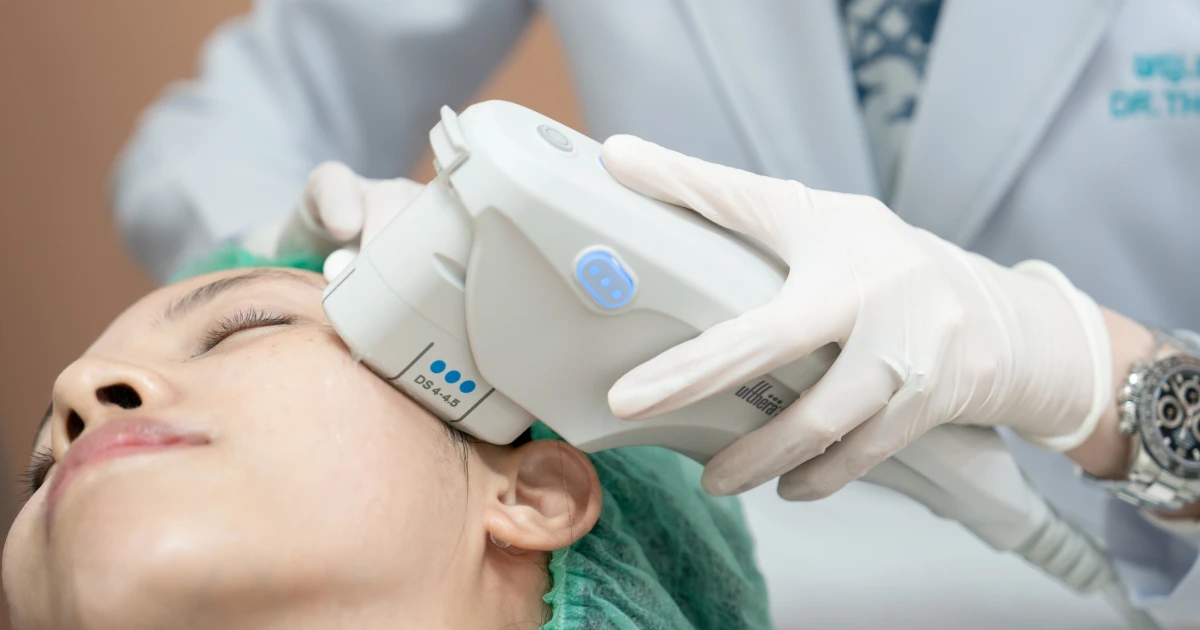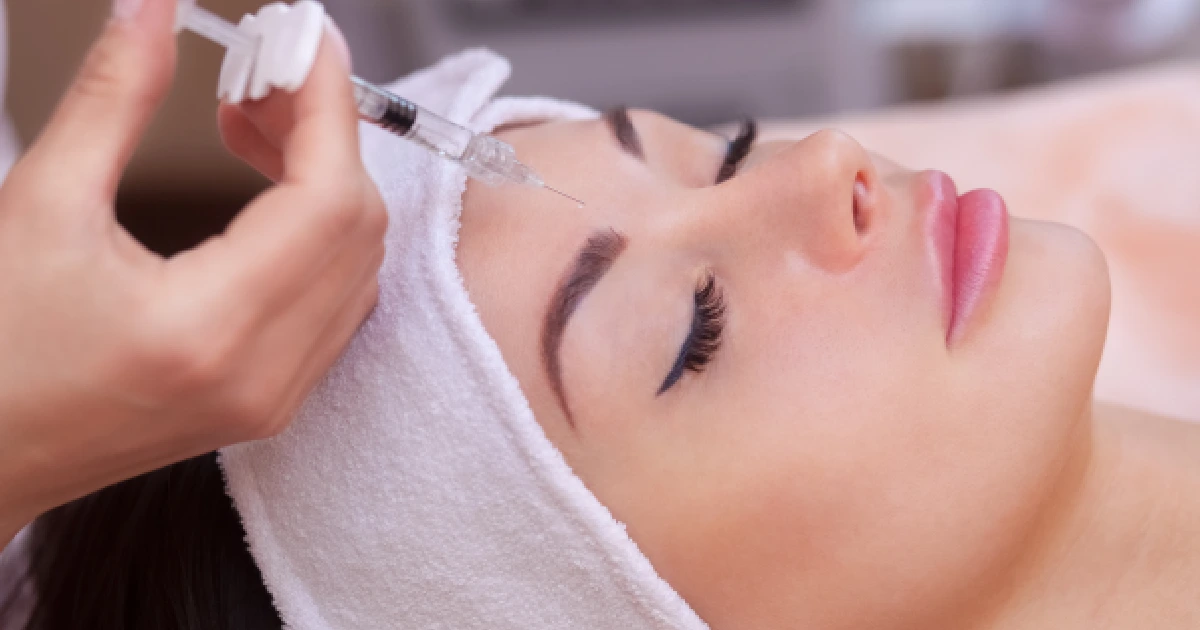For several reasons, the popularity of non-surgical cosmetic treatments, such as Dermal fillers and Botox, has increased in recent years. Dermal fillers and Botox are two of the most popular non-surgical cosmetic treatments used to reduce the signs of aging and enhance facial features. Both procedures are minimally invasive and can be completed quickly with little to no downtime.
What Are Dermal Fillers?
Dermal fillers are injectable gels made from various materials, including hyaluronic acid, calcium hydroxylapatite, and poly-L-lactic acid. These fillers are used to enhance facial characteristics by adding volume to the face, smoothing out wrinkles and fine lines, and smoothing out wrinkles and fine lines. Because it is a naturally occurring substance in the body that helps to maintain hydration and volume in the skin, hyaluronic acid is the most often utilized material for dermal fillers.
Dermal fillers made of hyaluronic acid can treat deep wrinkles and fine lines and add volume to areas of the face, such as the cheeks, lips, and chin. Dermal fillers are injected directly into the skin using a fine needle, and the procedure typically takes less than an hour to complete. Results are immediate and can last between six and eighteen months, depending on the type of filler used and the individual’s metabolism.
Common side effects of dermal fillers include bruising, swelling, and redness at the injection site, although these typically resolve within a few days. Choosing a qualified medical professional with experience in administering dermal fillers is important to minimize the risk of complications.
What Is Botox?
Botox is a brand name for a type of injectable protein called botulinum toxin type A. It temporarily paralyzes the muscles that cause wrinkles and fine lines, primarily on the upper part of the face.
Botox works by preventing the release of acetylcholine, a neurotransmitter responsible for muscular contraction. Botox can smooth out creases on the forehead, between the brows, and around the eyes by temporarily relaxing the muscles that generate wrinkles.
Simultaneously, small doses of Botox are injected directly into the muscles with a tiny needle during the treatment. The Botox procedure takes only a few minutes and involves no downtime. The effects are usually noticeable within a few days and can last three to six months, depending on the individual’s metabolism.
Common side effects of Botox include temporary weakness or drooping of the muscles near the injection site, although these typically resolve within a few days to a few weeks. Choosing a qualified medical professional with experience in administering Botox is important to minimize the risk of complications.
What Are The Distinctions Between Dermal Fillers And Botox?
While dermal fillers and Botox are both injectable cosmetic treatments that can reduce the signs of aging, they differ in several important ways:
- Mechanism of action. Botox temporarily paralyzes the muscles that create wrinkles, while dermal fillers restore volume to the face and fill in creases.
- Areas of the face treated. Dermal fillers are typically used to add volume to areas of the face, such as the cheeks, lips, and chin, while Botox is typically used to treat dynamic wrinkles, such as crow’s feet, frown lines, and forehead lines.
- Types of wrinkles targeted. Dermal fillers are best suited for treating deeper wrinkles and lines, while Botox is most effective on wrinkles caused by muscle movement.
- Duration of effects. Dermal fillers typically last between six and eighteen months, while Botox lasts between three and six months.
- Side effects. Dermal fillers can cause bruising, swelling, and redness at the injection site, while Botox can cause temporary weakness or drooping of the muscles near the injection site.
When deciding the right treatment, it is important to consider the individual needs and goals and consult a medical professional who can recommend the best course of action.
Which Treatment is Right for You?
Choosing the right treatment between dermal fillers and Botox depends on several factors, including the areas of the face to treat, the types of wrinkles, and individual goals.
For those who want to add volume to their face, fill in deep wrinkles, or enhance the contours of their face, dermal fillers may be the better option. However, for those with dynamic wrinkles caused by muscle movements, such as crow’s feet, frown lines, or forehead lines, Botox may be more effective.
As indicated, it is important to consult a qualified medical professional who can assess the needs and recommend the best treatment. The medical professional will examine the face, discuss goals and expectations, and explain the benefits and dangers of each treatment choice during the consultation.
Nonetheless, the decision between dermal fillers and Botox is a personal one that should be based on individual needs, preferences, and goals. A qualified medical professional can help make an informed decision and achieve the best possible results.
What Are The Aftercare Tips After Dermal Fillers And Botox?
Aftercare is crucial to achieving the best dermal fillers or Botox treatment results. Here are some aftercare tips to help care for the skin after the procedure:
- Avoid touching or massaging the treated area for at least 6 hours afterward.
- Avoid excessive physical activity for at least 24 hours after the procedure to prevent the filler from shifting or spreading.
- Use ice or a cold compress on the treated area to reduce swelling and bruising.
- Avoid taking aspirin, ibuprofen, or other blood-thinning medications for at least 24 hours post-treatment not to increase the risk of bruising and bleeding.
- Avoid exposure to direct sunlight or excessive heat, such as saunas and hot tubs, for at least 24 hours after the treatment.
- Drink plenty of water to keep the skin and tissues hydrated.
- Avoid applying any makeup or skincare products to the treated area post-treatment for at least 6 hours.
- No alcohol should be consumed for at least 24 hours after the treatment, as it can increase swelling and bruising.
- Follow any specific aftercare instructions provided by the medical professional.
Contact the medical professional immediately if experiencing any unusual or persistent symptoms after the treatment, such as severe pain, swelling, or redness.
Final Thoughts
Non-surgical cosmetic treatments, such as dermal fillers and Botox, have grown in popularity in recent years because of their effectiveness, minimum downtime, and low risk of problems compared to surgical procedures. Cloud 9 Medspa offers Dermal fillers, which use hyaluronic-acid-based fillers that are exceptional treatments to restore youthful, natural-looking appearances without feeling overdone. Ultimately, Dermal fillers are an ideal non-surgical option for restoring volume to the face, smoothing out wrinkles, and enhancing natural features.




